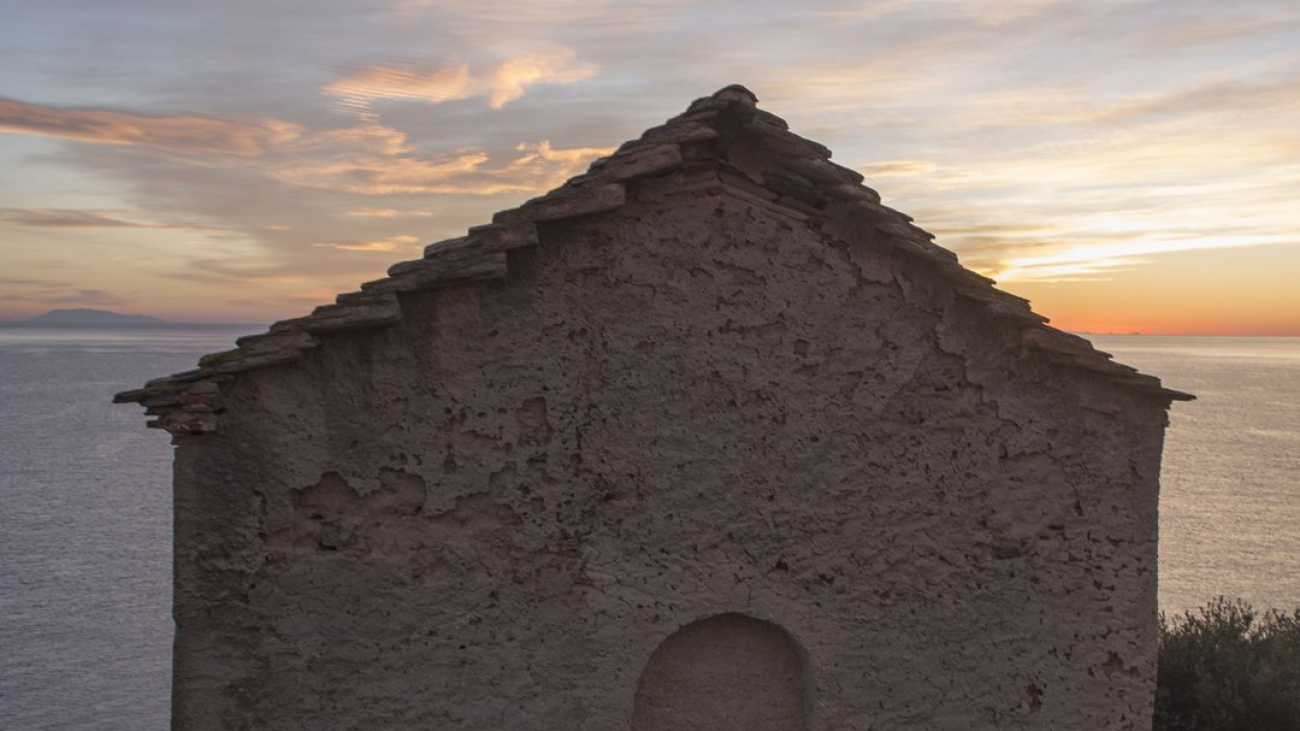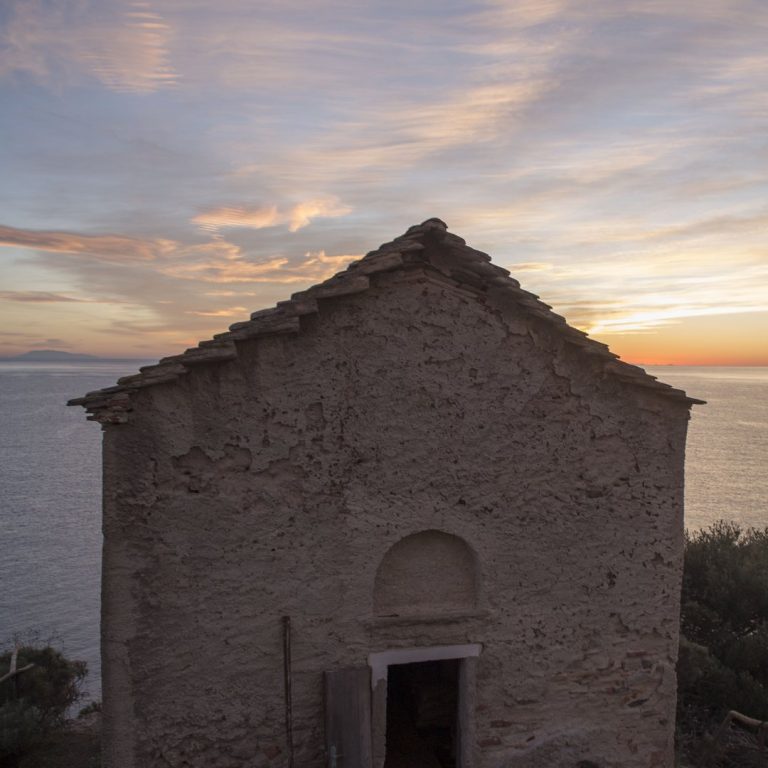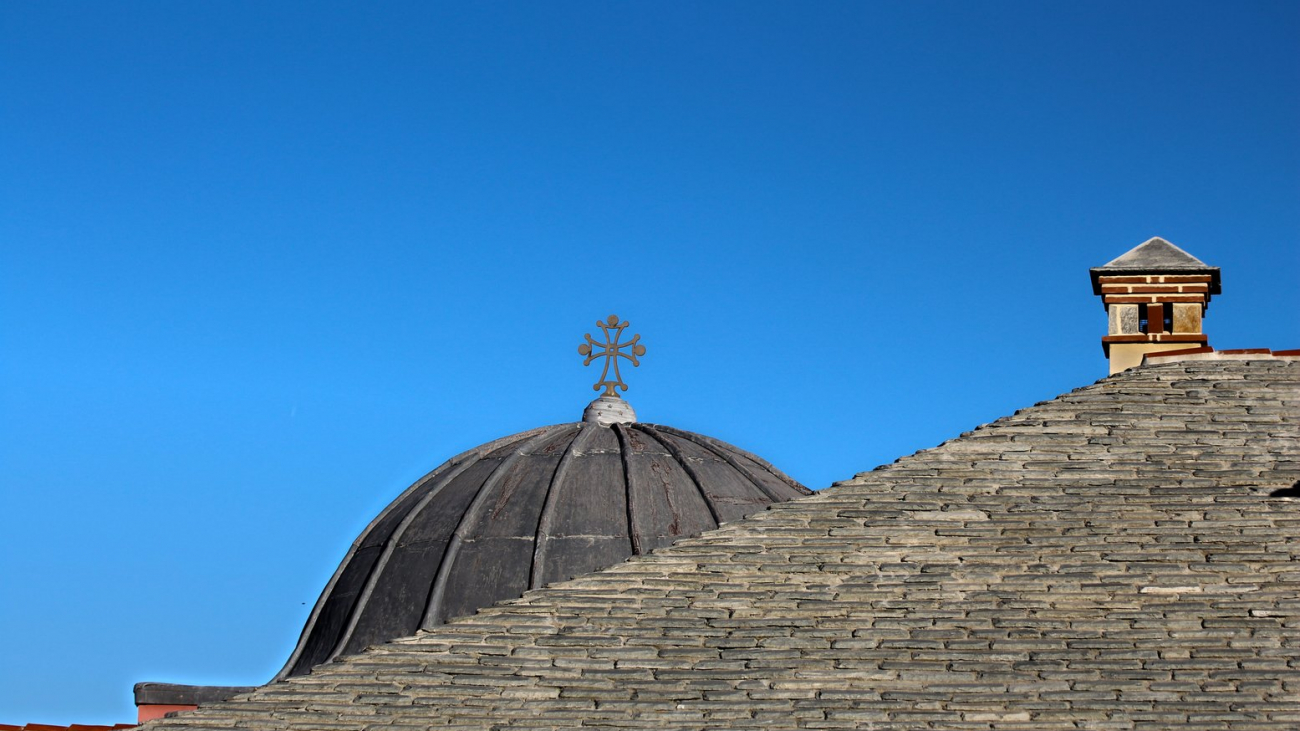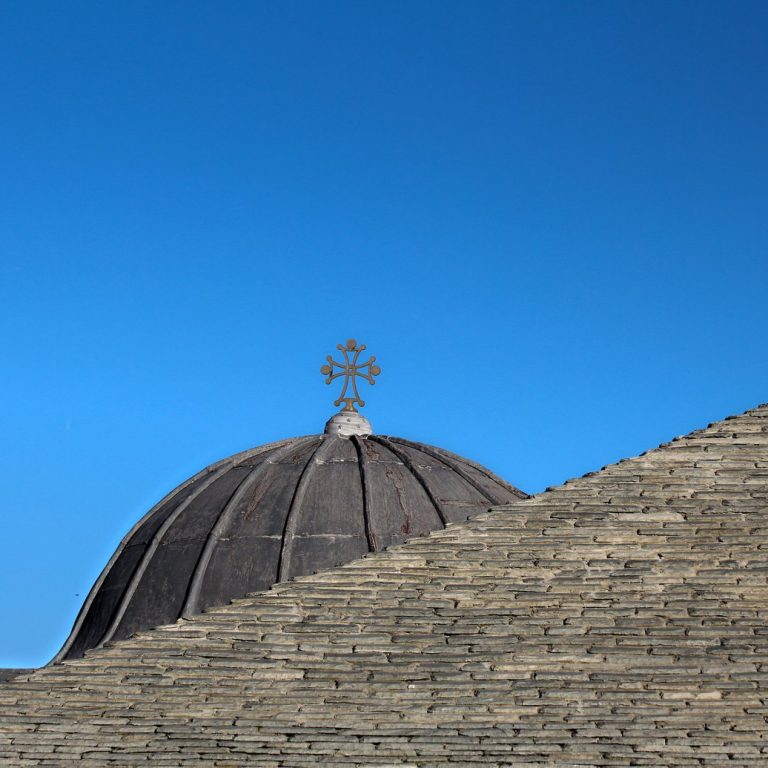Outside The Monastery
The chapels outside the Monastery are as follows:
a) St. Athanasios of Agios Oros, an old one-room, chapel with an arched roof located in front of the south wing of the Monastery at the edge of the cliff. This is one of the most significant of the original buildings, and functioned as the cemetery church until 1771. Its basement is still used today as a crypt. Inside the chapel, some of the sections of the original marble icon screen have survived, along with the inlaid marble floor.
b) Sts Onofrios and Petros of Agios Oros, located in the Seat of the same name a short distance north of the Monastery, where according to tradition, St Kallistos I, Patriarch of Konstantinople, and St Theonas, Metropolitis of Thessaloniki, lived as ascetics.
c) Great Athanasios, who according to tradition, is connected with the selection of the location for the foundation of the Monastery through a miraculous intervention by the icon of Panagia Gerontissa, as mentioned previously. One inscription has survived, confirming the renovation of the chapel in 1638.
d) St Trifon, located in the Seat of the same name, dates to the 17th century.
e) The Holy Anargyroi (i.e., 'they who serve without being paid'), located in the Seat of the same name, today serves as the cemetery church of the Monastery, and dates to 1771.
f) The Holy Apostles, located in the Seat of the same name.
g) St. Anna, which today is in ruins, is located in the Seat of the same name.
a) St. Athanasios of Agios Oros, an old one-room, chapel with an arched roof located in front of the south wing of the Monastery at the edge of the cliff. This is one of the most significant of the original buildings, and functioned as the cemetery church until 1771. Its basement is still used today as a crypt. Inside the chapel, some of the sections of the original marble icon screen have survived, along with the inlaid marble floor.
b) Sts Onofrios and Petros of Agios Oros, located in the Seat of the same name a short distance north of the Monastery, where according to tradition, St Kallistos I, Patriarch of Konstantinople, and St Theonas, Metropolitis of Thessaloniki, lived as ascetics.
c) Great Athanasios, who according to tradition, is connected with the selection of the location for the foundation of the Monastery through a miraculous intervention by the icon of Panagia Gerontissa, as mentioned previously. One inscription has survived, confirming the renovation of the chapel in 1638.
d) St Trifon, located in the Seat of the same name, dates to the 17th century.
e) The Holy Anargyroi (i.e., 'they who serve without being paid'), located in the Seat of the same name, today serves as the cemetery church of the Monastery, and dates to 1771.
f) The Holy Apostles, located in the Seat of the same name.
g) St. Anna, which today is in ruins, is located in the Seat of the same name.




